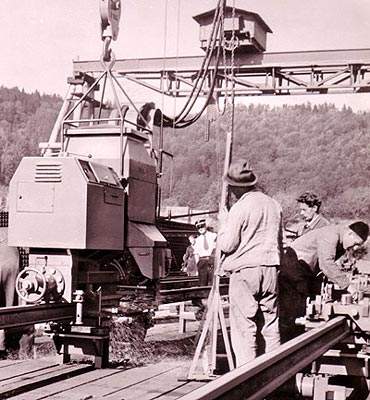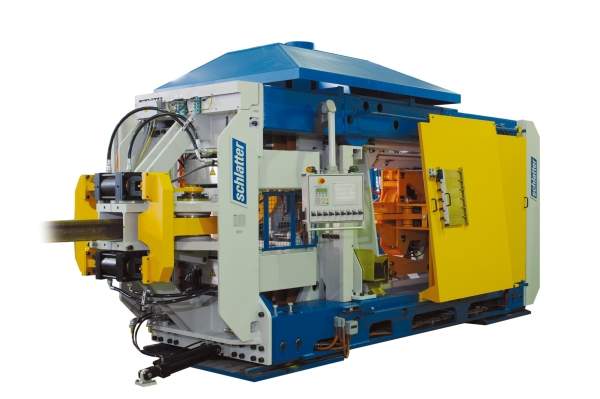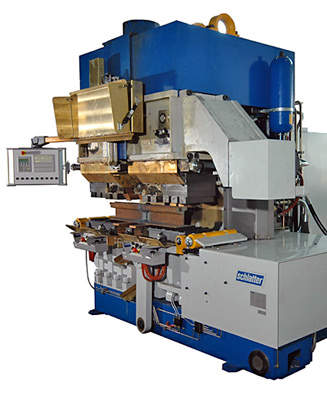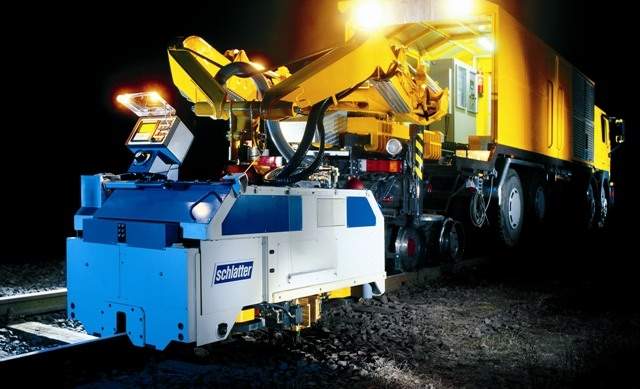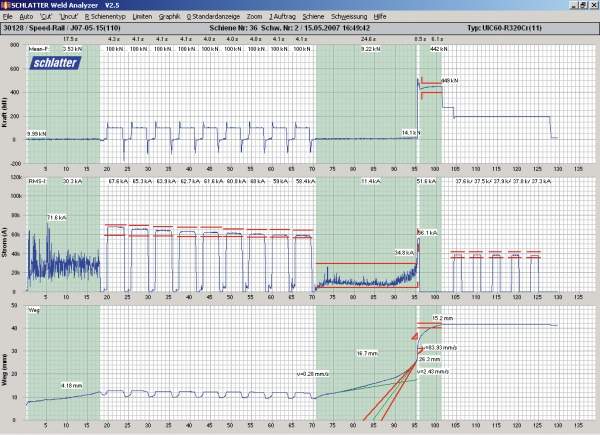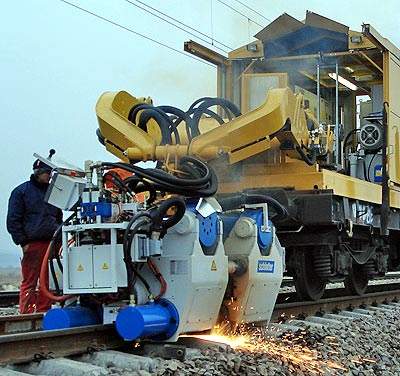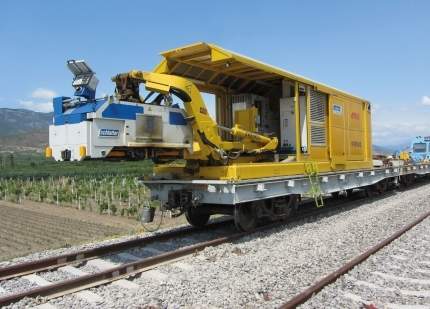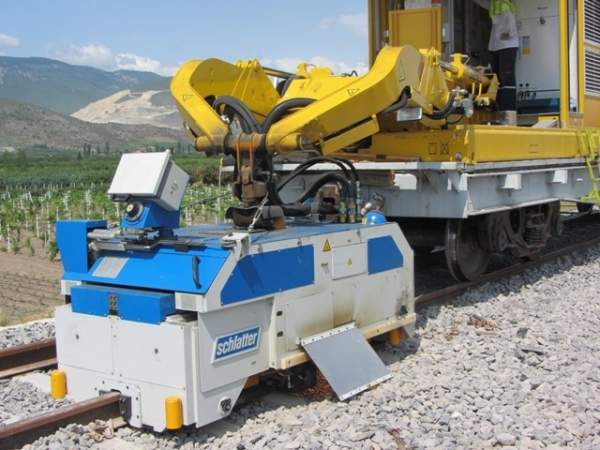
Schlatter was founded in 1916 and since then has concentrated on solutions involving electric resistance welding technology. Schlatter provides welding systems mainly for three target industries: wire mesh welding, radiator welding and rail welding.
Schlatter developed the first rail flash butt welding machine in the early 1950s. Today Schlatter is a market leader in stationary rail welding machines for long welded rail production (LWR), and for welding machines for turnout parts, frog points and crossings. Also our mobile rail welding systems are known worldwide and widely used for welding continuous welded rails for high speed tracks and heavy haul tracks.
In Schlatter rail welding machines the focus is on quality. This comprises quality, long-life and low operational-costs of the machines, and also quality of the final rail welds.
Welding short rails into long welded rails with Schlatter GAAS80
The renowned Schlatter rail welding machine GAAS80 is in daily welding operation worldwide in rail welding factories. It features DC weld current, precise alignment of the rail ends (on running edge, selectable left or right side), precise vertical alignment including crown-position, outstanding weld quality and automatic deburring only seconds after welding.
The rail ends remain clamped during deburring, which ensures high quality. Little remaining burr around the rail profile results in easy and cost-effective grinding.
For complete production lines, Schlatter cooperates with experienced partners for additional machines like rail end brushing machines, straightening presses and rail profile grinding machines.
Railway switches and crossings welded with Schlatter GAA100
The Schlatter GAA100 flash butt welding machine has an extremely compact housing, open at the front for easy loading and positioning of work pieces. Four clamping presses, each with 1,000kN clamping force, make sure that there is no slip.
Railway turnout parts, points and crossings as well as switch blades are exposed to very high loads. For a long service life, manufacturers use hard manganese and high alloy steel which is welded to conventional rail steel with the Schlatter GAA100. This requires complex weld programs and special processes. Major manufacturers of turnouts and switch blades use the Schlatter GAA100 successfully for its flexibility, high-quality welds and geometrical accuracy.
Mobile rail welding machines and systems
Schlatter offers various mobile rail welding systems for in-track welding of continuous welded rails (CWR). The latest development produces closure welded tracks without separate pulling devices for destressing. Customers choose between three different mobile rail welding machines: Supraflex type AMS200, AMS100 and AMS60. All these mobile welders offer the same high welding quality but different rail end aligning systems. AMS200 and AMS60 are most suitable for high-speed railway tracks for passenger transportation. AMS100 aligns the centre of the web and is mainly designed for heavy haul and conventional railway tracks.
The AMS200 features the necessary force to achieve the required calculated dilatation. The loss of material due to the welding process is taken into account in the calculation. The machine offers a long travel in order to allow a reliable destressing, even at low temperatures. The AMS200 has an integrated deburring unit independent from the moveable machine side, which deburrs directly after welding while the rail ends remain firmly clamped. The distressing force acts in the neutral zone of the rail, which increases the weld quality and protects the machine from unwanted stress. Free space around the rail foot avoids collision with sleepers and track fasteners and minimizes the need to raise the rail ends.


